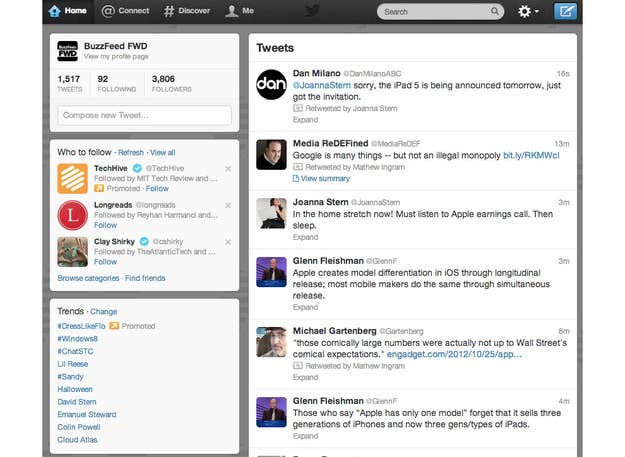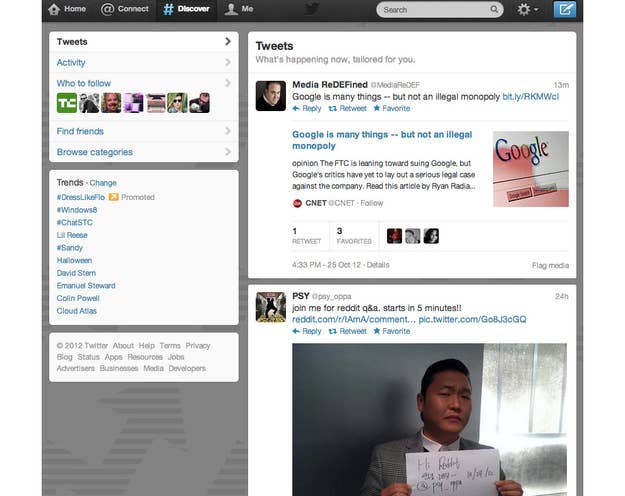Ok, so when you log into Twitter today, the first thing you see is this:

This is the Twitter you've been used to for years. Sure, there are some new ads, it all looks a little different, and when you click on Tweets they expand into "Cards." But it's still essentially Twitter, in that it's a stream of 140-character messages posted in strict reverse-chronological order.
Now, this is what you see when you click the "Discover" tab:

It's basically a list of the most popular Tweets from people you follow, or people they follow, expanded into full Card form. Depending on your tech diet, it will remind you of:
- The Facebook newsfeed
- The Tumblr Dashboard
- Apps like Flipboard or Pulse
- A blog
Twitter announces new changes almost every week. Today's announcement was about Cards, which in addition to video and photos can now embed sounds and interactive elements, such as poll widgets.
So, take a good look at Cards: those are the new Tweets. And take a good look at the "Discover" page, because — and this is just an educated guess, but one I'm confident in based on past reporting — that, eventually, will be the main Twitter homepage.
This is what people mean with they talk about the "future of Twitter," or about how "Twitter is becoming a media company." It's basically just this:

Old Twitter — the stream of Tweets — will of course remain; it's the backbone of the whole thing, and the material from which the Discover-style content flow is built.
But for the majority of users, for whom Twitter is about reading rather than Tweeting or obsessively tracking news, it will become secondary. Just another tab.
